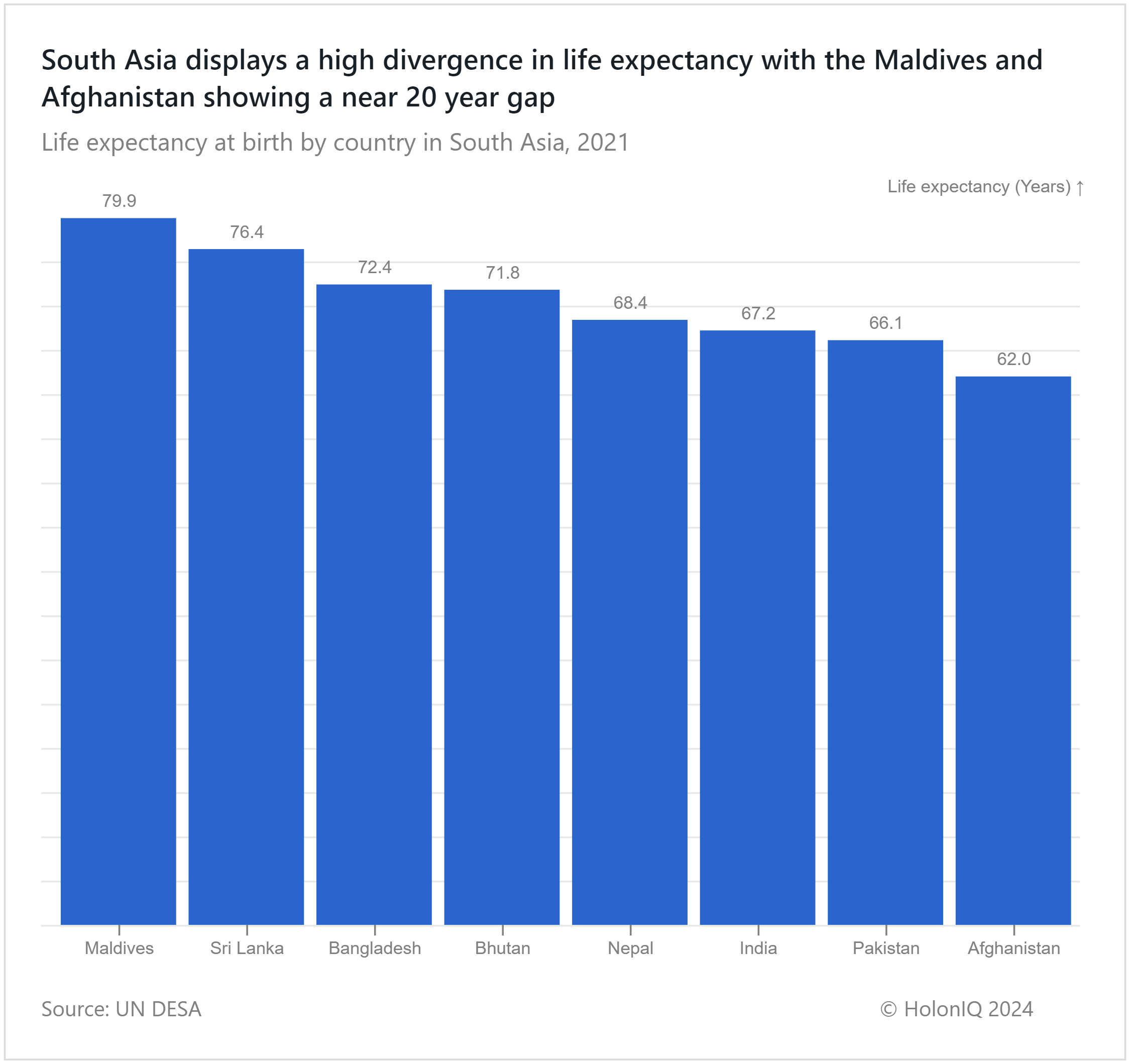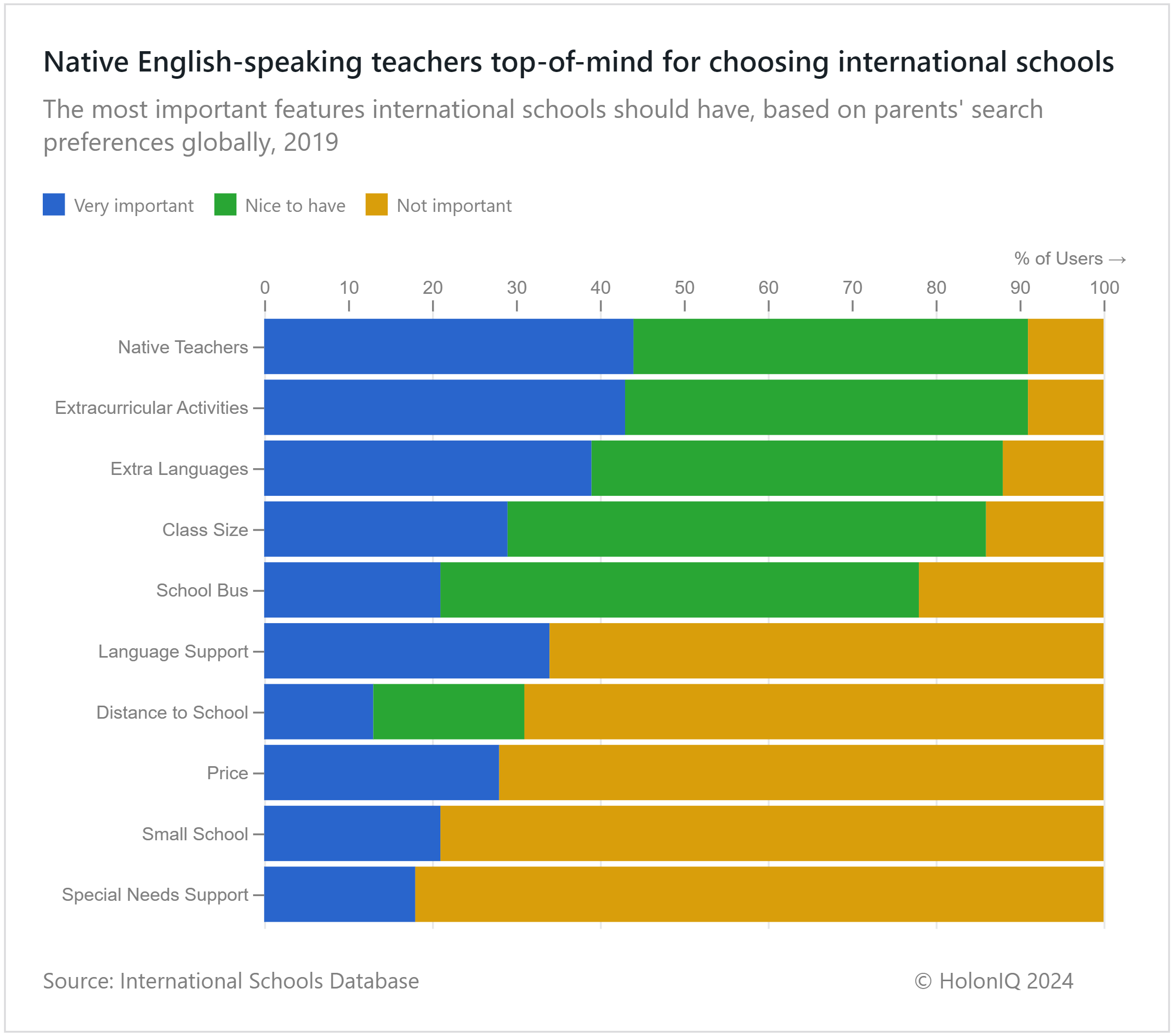🔋 Chinese Batteries. 20Y Life Expectancy Gap. International Schools.
Chart of the Day #31 looks at battery manufacturing capacity, life expectancy gaps in South Asia, and parents' international school preferences.
Ni Hao 👋
Chinese scientists have developed the first rechargeable battery which can be charged and discharged 700 times, using calcium, which is 2,500 times more abundant than lithium. A new substance, which could reduce lithium use by 70% in batteries, has been discovered using AI and supercomputing.
Today's Topics
- 🔋 Batteries. China Battery Manufacturing Capacity 3x RoW
- ⚕️ Life Expectancy. 20-Year Life Expectancy Gap in South Asia
- 🎒 International Schools. 91% Prefer Native English-Speaking Teachers in International Schools
For unlimited access to over one million charts, request a demo.
🔋 China Battery Manufacturing Capacity 3x RoW

In 2022, the US Inflation Reduction Act (IRA) encouraged domestic battery plant investments and production efforts. Companies like Volkswagen and Panasonic joined forces in response to this policy, with the US projected to grow its manufacturing capabilities 9x by 2030, catalyzed by the initiative. Nevertheless, China, with a manufacturing capacity triple that of the US, Europe, and the rest of the world, is poised to maintain its dominance as a major battery superpower. This gap is projected to widen by 2030.
The relatively late government support and a fragmented industry with multiple market players hinder the US' growth, even with the IRA aiming to bridge this gap. China's dominance stems from its early entrance into the market, with homegrown battery tech companies processing two-thirds of global battery-grade minerals. These companies are demonstrating considerable resilience, even in the face of the IRA.
⚕️ 20-Year Life Expectancy Gap in South Asia

Despite sharing geographical proximity, South Asian countries exhibit significant differences in life expectancy. The Maldives leads with 79.9 years compared to Afghanistan's 62 years, representing an almost 20-year gap. The most recent data for physician density somewhat mirrors this ranking. Whilst Maldives and Sri Lanka have relatively higher physician densities (2.2 and 1.2 respectively), countries like India, Bangladesh, and Afghanistan fall below the 1 physician per 1000 people mark.
Nutritional deficiencies, socioeconomic disparities, healthcare accessibility, and the state of health infrastructure play a part in this gap. Despite advanced medical technologies in India, widespread disparities in access persist across regions and income groups, creating bottlenecks. Similar challenges likely exist in other South Asian nations, impacting life expectancy.
🎒 91% Prefer Native English-Speaking Teachers in International Schools

When choosing international schools, parents prioritize schools with native English-speaking teachers, with extracurricular activities and additional language options coming in as close secondary considerations. Factors like small class sizes and school buses are also desirable but hold less weight comparatively. Interestingly, parents rank language support for non-native students, school proximity, affordability, and special needs support considerably lower. Families tend to value international schools for their immersion in English and exposure to various languages and cultures, promoting a well-rounded education for their children.
Like getting this newsletter? For unlimited access to over one million charts, request a demo.
Thank you for reading. Have a great week ahead!
Have some feedback or want to sponsor this newsletter? Let us know at hello@holoniq.com
